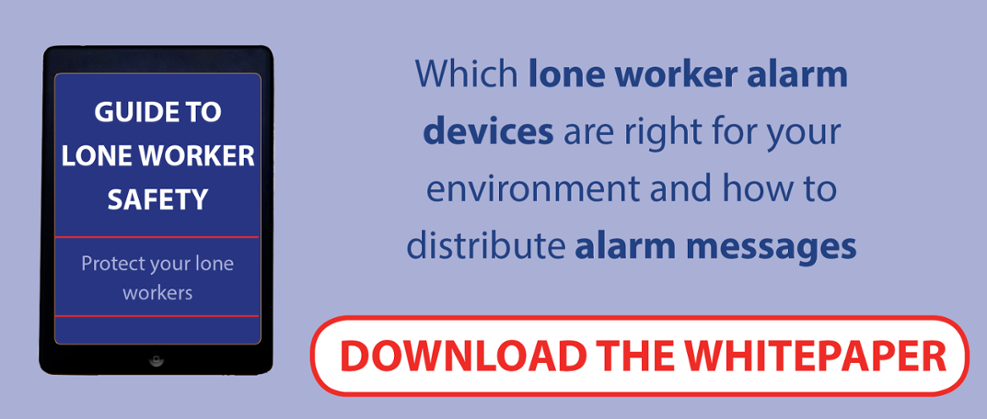
Call of Duty
As the lone working market, and its inherent health and safety risks, grows, Klaus Allion, Managing Director at ANT Telecom, outlines how businesses can dodge a bullet by strengthening their lone worker strategies.
The need for businesses to protect the health and safety of their workers is enshrined in UK legislation. But although there’s no doubt that companies endeavour to comply with HSE regulations, a nuanced question remains; employers know they have a duty of care, but do they care about their duty? In the case of protecting lone workers, the answer, ironically, is enough to set alarm bells ringing. A surprising number of companies do the bare minimum to safeguard those who work alone, adopting approaches that – whilst compliant – leave their workers highly vulnerable. The potential consequences – financial, reputational and human – are significant. But they can be avoided. With expert advice, robust risk assessment and the appropriate application of inexpensive technology, organisations can quickly enhance their lone worker strategies. For many, it’s time they did, before the accident that’s waiting to happen leaves their business, and their staff, in a precarious position.
Single player
Protecting the workforce is not a choice, it’s a Call of Duty. But unlike the video game of the same name, failure to protect your troops on the front line can have real-life repercussions. With the penalties for failure severe, a lone worker accident could mean ‘game over’ for many businesses. And the victims don’t get a second life.
The most dangerous locations for lone workers are obvious; wind turbines, oil/gas refineries, manufacturing plants and distilleries are well-known hazardous environments. But conventional workplaces also present risks. The most high-profile recent HSE fine was issued to a high street bookmaker. The odds of it happening to you may be shorter than you think.
Yet despite increasing regulatory scrutiny, a high number of UK organisations admit their ability to identify and respond to an emergency is inadequate. A 2016 survey of UK organisations1 revealed that a quarter of companies that deploy lone workers would take more than 30 minutes to discover if one had been rendered unconscious. A worrying 15% would take longer than an hour. Similarly, 25% of companies would take more than ten minutes to locate an unconscious worker, with 12% taking over half an hour. These are troubling revelations. In the game of life, every second counts.
Manual play
Perhaps the results shouldn’t surprise us. After all, the survey also shows that 60% of companies with staff who work alone don’t issue them with lone worker devices. Many rely on manual processes where lone workers use their mobile phones to check-in with site-based operators at regular intervals. Conversely, some companies require lone workers to dial an emergency number in the event of an accident. This approach is not only contingent on a mobile signal, it’s futile in the event of serious injury. In either situation, the process is dependent on busy operators being available to take the call and escalate a response. If they’re not, the vulnerable lone worker is required to try again. And all the while, the clock is ticking. That many companies fail to document this activity to create an accessible audit trail is just the icing on the cake.
The study does little to dispel fears that some organisations treat lone worker protection as a tick-box exercise. Sometimes, even the companies that have recognised the need to adopt lone worker devices do so without conducting the necessary risk assessments or giving due diligence to the procurement process. Purchasing decisions are often based on price rather than business needs, and they commonly result in the acquisition of solutions that are inappropriate, ineffective or, worst of all, unused. Fittingly, such decisions are made in isolation, without insight or buy-in from the individuals they’re designed to protect.
These traits, however inadvertent, are characteristic of organisations that recognise their duty of care, but don’t do enough to show they care about their duty. It’s unintentional – but the ramifications are unforgiving.
Intelligent strategy
Thankfully, the risks associated with the vast majority of lone worker emergencies can be mitigated if companies adopt the right approach. In a legislative environment where failure to safeguard employees is, at its worst extreme, an imprisonable offence, organisations can do more to prevent being exposed to avoidable human tragedy.
The EU Directive around Best Available Technology Not Entailing Excessive Cost (BATNEEC) encourages businesses to make optimal use of cost-effective innovation that can mitigate risk. In the area of lone worker protection, such innovation not only exists, it commonly takes the form of technology we use every day. The best tech can help automate processes, accelerate alerts and escalate response. Furthermore, with many companies still operating expensive buddy-buddy systems as the centrepiece of their lone worker strategies, automation can help maximise productivity, reduce costs and increase efficiencies.
Multi-player
However, on its own, the tech is not enough. Its application requires customisation and design that can only come through a comprehensive appraisal of business requirements, environmental contexts and existing systems and processes. That’s why the best lone worker strategies are developed in partnership with telecoms experts whose familiarity with the variable demands of remote and hazardous environments can help tailor the most appropriate solutions. In addition, with health and safety a collective responsibility, developing the right roadmap requires cross-functional engagement with stakeholders across the enterprise – guided by a trusted partner.
Paradoxically, lone worker solutions do not sit in silos – they integrate into the fabric of an organisation. As such, the procurement of a lone worker system should be a holistic consideration. For example, the introduction of a GSM-based solution not only offers effective lone worker protection, it can also provide a platform for mobile communications, where additional value-added services can be overlaid to futureproof and transform a business. The breadth of opportunities that come from looking at the bigger picture only highlights the myopia of treating lone worker protection as a narrow, commodity-based decision. And it’s just another reason why businesses with sub-optimal lone worker provision should step up and do their duty.
Call of Duty
In an era where increasing regulatory scrutiny is matched by rapid advances in disruptive innovation, there can be no excuse for companies who fail to take advantage of the best available technology. To optimise it, it makes sense to partner with a trusted expert, evaluate your exposure and plan for a safer future.
Fundamentally, from the board room to the coalface, workplace health and safety is not a game, it’s a Call of Duty. It’s time to dodge the bullet. The smartest companies will be those that arm themselves now – before they run out of lives.




